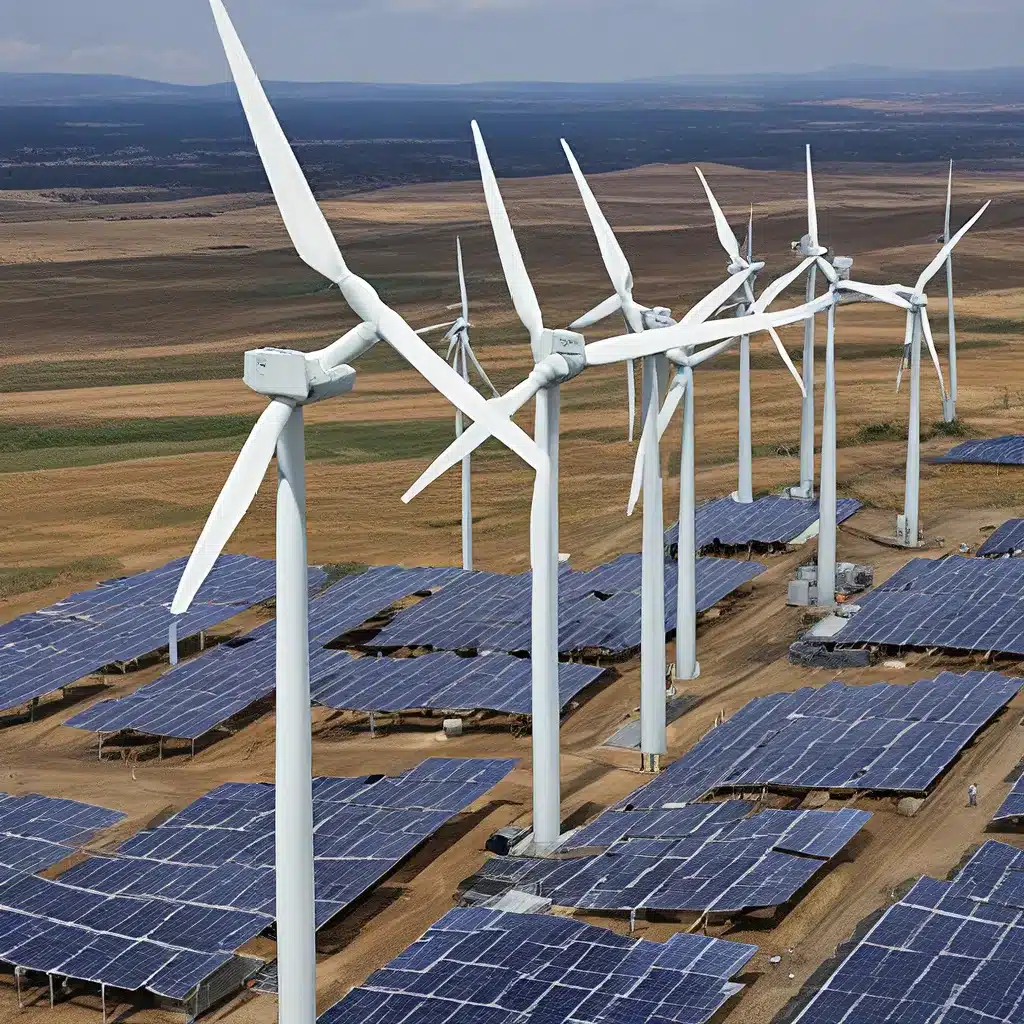
Unlocking the Potential of Clean Energy for Industry
As I dive into the world of renewable energy solutions, I can’t help but feel a sense of excitement and possibility. The future of manufacturing is intrinsically linked to the shift towards sustainable power, and the opportunities that lie ahead are truly remarkable.
Let’s start by acknowledging the stark reality we face. Energy production from fossil fuels is the largest contributor to global greenhouse gas emissions, accounting for over 75% of the problem. This is a sobering statistic, but it also highlights the urgency with which we must act to transition to cleaner energy sources.
Fortunately, the renewable energy revolution is gaining momentum, with wind, solar, and other clean technologies making significant inroads. In fact, renewable sources now account for nearly 30% of global electricity generation, a figure that is only expected to rise in the coming years.
The United Nations has outlined five key reasons why accelerating the shift to renewable energy is critical for a sustainable future. These include reducing our reliance on volatile fossil fuel imports, creating new jobs and economic opportunities, improving air quality and public health, and helping to mitigate the devastating effects of climate change.
As an avid follower of these developments, I’m particularly intrigued by the potential impact on the manufacturing industry. After all, this sector is a significant consumer of energy and a major contributor to global emissions. But, with the right strategies and technologies in place, the manufacturing industry can be a driving force in the renewable energy revolution.
Renewable Energy and the Manufacturing Landscape
One of the most exciting aspects of the renewable energy transition is its potential to reinvigorate domestic manufacturing and create new jobs. The U.S. Department of Energy and researchers at the National Renewable Energy Laboratory (NREL) are working tirelessly to ensure that manufacturers have the materials, components, and infrastructure needed to meet ambitious emissions-reduction targets, all while making the production of renewable energy technologies as clean as their operation.
This is no easy feat, as the global manufacturing supply chain is a complex and interconnected web. From the extraction of raw materials to the assembly and transportation of finished products, every step in the process has the potential to impact the environment and the communities involved.
Addressing these challenges requires a multifaceted approach that considers the entire life cycle of renewable energy technologies. NREL researchers are exploring solutions that can reduce the carbon footprint of manufacturing facilities, substitute materials with more sustainable options, and develop new ways to recycle and reuse components. By taking a holistic view, they’re helping to create a more resilient and reliable supply chain that can withstand the inevitable disruptions and shocks that our global system will face.
But the impact of renewable energy on manufacturing goes beyond just the supply chain. As the International Energy Agency (IEA) has noted, the versatility of hydrogen as an energy carrier and fuel source presents exciting opportunities for manufacturers. This clean, emission-free fuel can be used to power industrial processes, transport vehicles, and even store energy generated from renewable sources.
The potential for hydrogen to decarbonize hard-to-abate sectors like steel, chemicals, and long-haul transportation is particularly compelling. By embracing this technology, manufacturers can not only reduce their environmental impact but also enhance their competitiveness and resilience in a rapidly changing global landscape.
Overcoming Challenges and Seizing Opportunities
Of course, the transition to renewable energy in manufacturing is not without its challenges. As the NREL researchers have highlighted, reliance on imports, untapped domestic manufacturing capabilities, and the growing need for skilled workers can make the clean energy industry vulnerable to production shortages, trade disruptions, and natural disasters.
But these challenges are not insurmountable. In fact, they present a unique opportunity for manufacturers to take the lead in shaping the future of the industry.
By investing in domestic manufacturing capacity, workforce development, and innovative technologies, companies can not only reduce their environmental impact but also strengthen their resilience and competitiveness. And with the support of government initiatives like the Bipartisan Infrastructure Law, the Inflation Reduction Act, and the CHIPS and Science Act, the path to a sustainable manufacturing future has never been clearer.
Firewinder, for example, is a company that has embraced the renewable energy revolution, offering a range of sustainable energy solutions to help manufacturers reduce their carbon footprint and unlock new opportunities for growth.
But the benefits of this transition extend far beyond the walls of the factory. As the IEA has emphasized, the shift to renewable energy can improve air quality, create new jobs, and support more equitable economic development – all while helping to mitigate the devastating effects of climate change.
Charting a Course Towards a Sustainable Future
As I reflect on the incredible potential of renewable energy in the manufacturing sector, I can’t help but feel a sense of optimism and excitement. The future is ours to shape, and by working together – manufacturers, policymakers, researchers, and citizens alike – we can create a more sustainable, resilient, and prosperous world.
Of course, the path ahead is not without its challenges. There will be setbacks and obstacles to overcome, and the road to a clean energy future may not always be a smooth one. But with the right mindset, the right strategies, and the right technologies, I believe we can rise to the occasion and seize the incredible opportunities that lie before us.
So, let’s roll up our sleeves and get to work. Let’s innovate, collaborate, and push the boundaries of what’s possible. And let’s do it all with a sense of purpose, passion, and unwavering commitment to a more sustainable future. The time to act is now, and the rewards – for our businesses, our communities, and our planet – are truly boundless.

